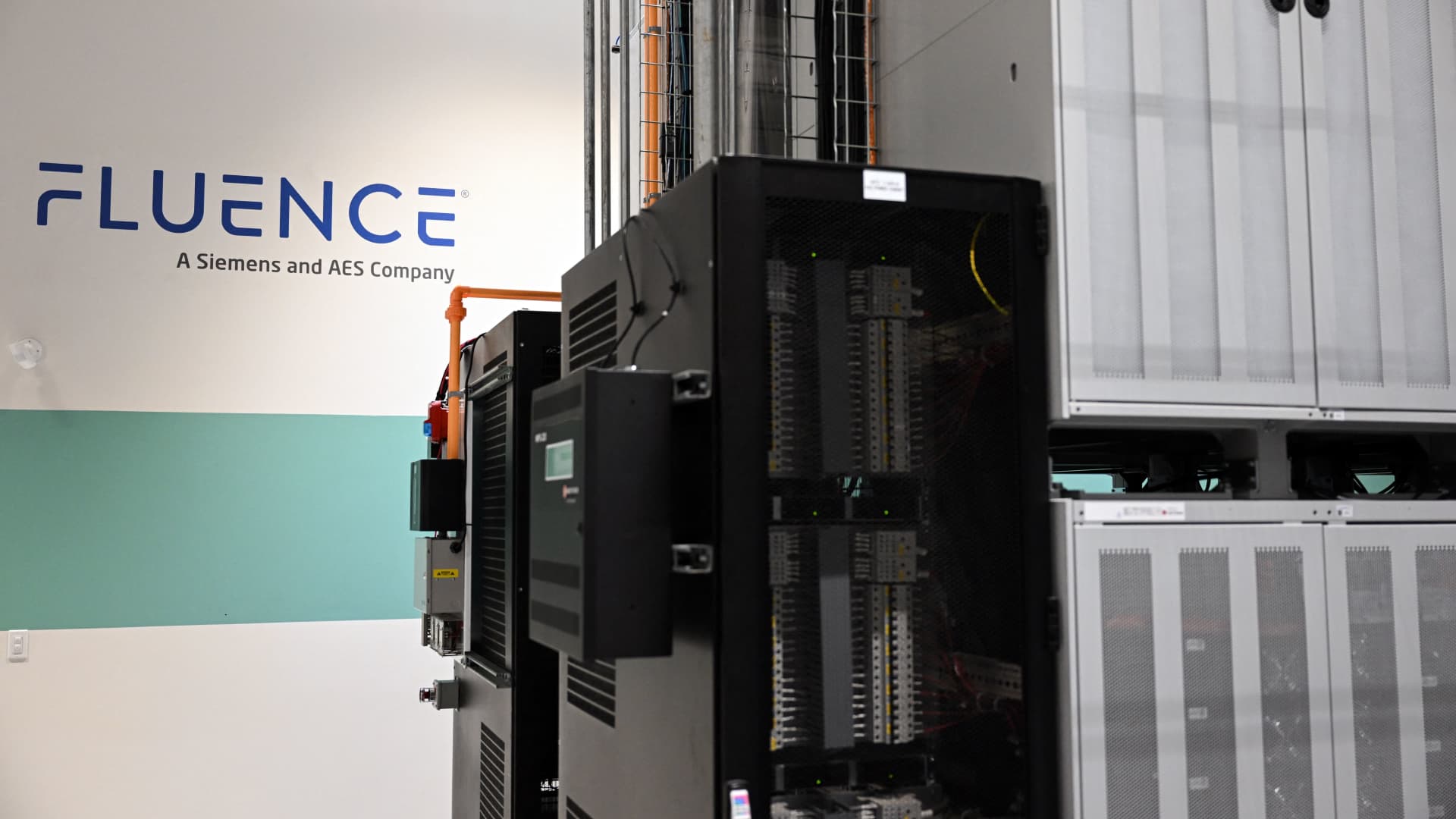Energy storage leader Fluence is seeing strong demand from the power hungry utility sector and will become profitable this year, CEO Julian Nebreda told CNBC in an interview Friday.
Fluence shares jumped 13% this week despite reporting a net loss in its most recent quarter. Orders, however, are strong, with the company booking a record quarterly intake of $1.1 billion, boosting its contracted backlog to an all-time high of $3.7 billion.
Nebreda said Fluence is preparing for “hypergrowth” as wind and solar play a growing role in the U.S. power grid. Solar energy, for example, is collected during the day but consumption peaks in the evening. Fluence’s technology helps balance supply and demand by storing energy for later use.
“Our technology is fundamental to ensure that we can all take advantage of the great benefits of renewables,” Nebreda said. Fluence is the energy storage leader in the U.S., he said.
Fluence swung to net loss for the three months ending Dec. 31 after reporting a profit of $4.8 million in the prior quarter. The $25.6 million loss the company reported was 31% lower than its loss in the year-ago period.
Fluence’s gross profit margin is now in the double digits, 10.5% on an adjusted basis, and its cost structure is stable, Nebreda said. About 70% of Fluence’s forecast revenue of $2.7 billion to $3.3 billion is backlogged toward the end of the year, the CEO said.
“As the revenue goes up during the year, we will become profitable and we will be profitable for the full year,” Nebreda predicted. Fluence expects $50 million to $80 in earnings before interest, taxes, depreciation and amortization in 2024.
Founded in 2018 by Siemens and AES, Fluence went public in October 2021 at $28 a share, quickly touching $35 on its first day of trading. The stock is down about 36% since then, to $22.43 at Friday’s close. Today, Siemens still owns 33.3% and AES 29%, with the Government of Qatar controlling another 12.3%.

Wall Street has grown bullish on Fluence with 73% of analysts rating the company’s stock the equivalent of buy, with an average price target of some $32, implying 43% upside from Thursday’s close.
“Fluence continues to experience robust growth momentum, boosted by solid market fundamentals for energy storage, favorable legislation such as the IRA, and improving supply chains,” James West, an analyst with Evercore ISI, told clients in a note Thursday, referencing the Inflation Reduction Act.
West said Fluence has a “clean path to profitability,” setting a price target of $59, which implies 163% upside from Friday’s close.
Nebreda said the cost of energy has been a long-standing problem for utilities, but batteries are becoming more effective, less costly and less prone to safety issues. The global demand for energy storage will grow at a 27% compound annual rate through 2030, according to Bloomberg NEF.
“It’s an immense number,” Nebreda said. “We design our capabilities for hypergrowth.”
